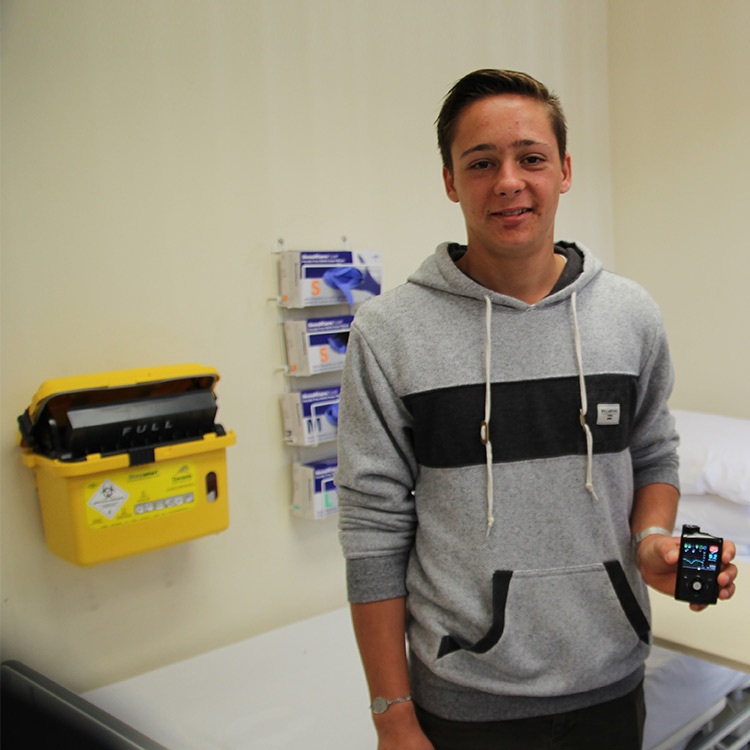Search
Research
The Effect of Hypoglycemia on Spectral Moments in EEG Epochs of Different Durations in Type 1 Diabetes PatientsThe potential of using an electroencephalogram (EEG) to detect hypoglycemia in patients with type 1 diabetes has been investigated in both time and frequency domains. Under hyperinsulinemic hypoglycemic clamp conditions, we have shown that the brain's response to hypoglycemic episodes could be described by the centroid frequency and spectral gyration radius evaluated from spectral moments of EEG signals.
Research
Effect of Exercise Intensity on Exogenous Glucose Requirements to Maintain Stable Glycemia At High Insulin Levels in Type 1 DiabetesUnder basal insulin levels, there is an inverted U relationship between exercise intensity and exogenous glucose requirements to maintain stable blood glucose levels in type 1 diabetes (T1D), with no glucose required for intense exercise (80% V̇O2 peak), implying that high-intensity exercise is not conducive to hypoglycemia.
Research
Ultraviolet radiation, Vitamin D and the development of obesity, metabolic syndrome and type-2 diabetesEmerging findings suggest a protective role for ultraviolet radiation (UVR) and sun exposure in reducing the development of obesity and cardiometabolic dysfunction, but more epidemiological and clinical research is required that focuses on measuring the direct associations and effects of exposure to UVR in humans.
Research
Endocrine and metabolic consequences due to restrictive carbohydrate diets in children with type 1 diabetes: An illustrative case seriesThe promotion of a low carbohydrate diet in media is in contrast to published pediatric diabetes guidelines that endorse a balanced diet from a variety of foods

News & Events
Local researchers lead biggest ‘artificial pancreas’ outpatient studyThe Children’s Diabetes Centre at The Kids Research Institute Australia is leading the longest and largest at-home trial of a hybrid closed-loop insulin pump system.
Research
Parental Experiences of Having a Child Diagnosed With Septo-Optic DysplasiaSepto-optic dysplasia (SOD) is a congenital disorder affecting 1 in 10,000 births, defined by the presence of at least two of a clinical triad, consisting of optic nerve hypoplasia, midline brain defects and pituitary hormone deficiency. Children with SOD may have vision impairment, hormonal deficiencies, developmental disorders, or epilepsy, but the clinical picture is highly variable. The complexity of SOD, its interplay with family factors, and the need for multiple specialty commitments can make the diagnosis period a challenging time for families.
Research
The use of an automated, portable glucose control system for overnight glucose control in adolescents and young adults with type 1 diabetesA key milestone in progress towards providing an efficacious and safe closed-loop artificial pancreas system for outpatient use is the development of fully...
Research
Ethnic and gender differences in rates of congenital adrenal hyperplasia in Western Australia over a 21 year periodThe aim was to evaluate the incidence, sex distribution, ethnicity, age at diagnosis, clinical presentation and morbidity of all childhood-onset congenital...
Research
Using continuous glucose monitoring to detect early dysglycaemia in children participating in the ENDIA study (Sub Protocol)Aveni Liz Haynes Davis BA (Hons), MBBChir, MA (Cantab), PhD MBBS FRACP PhD Principal Research Fellow Co-director of Children’s Diabetes Centre
Research
Assessment and management of hypoglycemia in children and adolescents with diabetesThis paper provides clinical practice guidelines for treating low blood sugar in children and adolescents with Type 1 diabetes.
